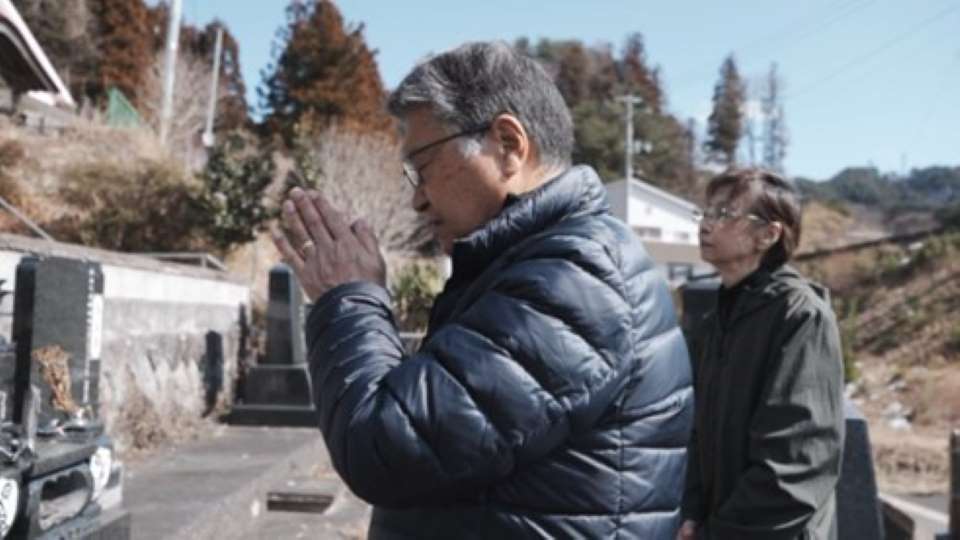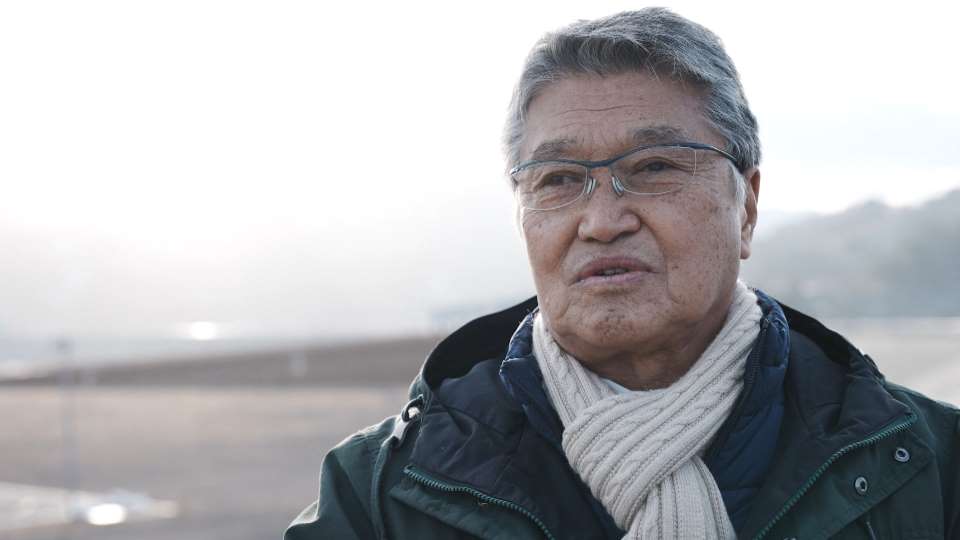Kuramoto Eiichi, now 71, remembers clearly the last conversation he had with his father Eikiyo and it pains him that it was so routine:
"Are you going out already?"
"Yeah."
Later that day, a tsunami with waves more than 15 meters high swept through his hometown of Otsuchi in Iwate, killing more than 1,200 of the town's residents, including his father.

Kuramoto says his father Eikiyo was a pillar of the community, a fisherman who founded a company that made and sold fishing gear and repaired boats. He also opened an auto-repair shop, served on the board of the local chamber of commerce, was chairman of the local community association, organized the town's biggest festival and helped to maintain shrines.
"My memory of him was cut off on March 11, and I regret not speaking to him more that morning," says Eiichi.

In the aftermath of the tsunami, most of central Otsuchi was gone. The waves had washed away the town hall and destroyed or damaged more than 4,000 homes.
Almost immediately, Kuramoto got to work trying to revive the devastated town. He not only set up a radio station to dispense disaster-relief tips, he also set up an NPO and helped them serve hot meals from a food truck. As the recovery began to take shape, he persuaded a major convenience store chain to open a much-needed branch in the area.
From the ground up
Reconstruction was slow in Otsuchi. It took five years to elevate land to ensure that no future tsunami could do the same damage. Then a new townscape started to take shape. There was a new town hall, a community center, freshly built schools. The local railway was repaired. But Kuramoto heard locals talking about one particular landmark they wanted to see again: the local shrine.
The tiny Sanriku Oshachi Tenmangu was a branch of a landmark 10th-century shrine in Fukuoka. Though it had none of the scale of its parent shrine, it was a focal point of the community and it was common to see families walking round the pond or relaxing on the benches.
On March 11, 2011 the tsunami waves swept it away, leaving no trace of it behind.

Authorities rebuilt a park that had hosted Sanriku Oshachi Tenmangu but they did not have the budget to recreate the shrine itself.
Kuramoto had spent the years since the tsunami helping to run his NPO that was engaged in efforts to revive the town. He persuaded the group that they should get the shrine rebuilt.
They reached out to the main shrine in Fukuoka, and worked with the priests there to raise the funds to rebuild Otsuchi's beloved centerpiece. It took them three years, and in November 2021, they cut the ribbon on a new Sanriku Oshachi Tenmangu, dedicated to the God of Learning.

Flavors back in favor
A year after rebuilding the shrine, Kuramoto opened a confectionery shop directly across the street. The town was once famous for its mochi sweets, and a monaka ― sweet red-bean paste in a rice wafer ― shaped like a salmon. Most of the outlets that sold these specialities had been destroyed, and some of the people who made them had moved away to restart life elsewhere. But Kuramoto believed the flavors were an important part of the town's cultural heritage, so he worked with other members of the NPO to open the store.

The shop was a quick success and Otsuchi residents come in droves to buy their monaka and a whole range of sweet treats.

"I just want to preserve what the townspeople have been eating for a long time," says Kuramoto.
Down the generations
The shop has also became a place where schoolchildren gather. These residents of the town were born after the tsunami and only know of the disaster from the stories they have heard.

He likes to invite them to cross to street to see a collection of small statues of Jizo, the guardian of the region. Each one of these figures stood in front of a temporary housing unit built for those who lost their houses to the tsunami.
By March 2020, the last of those housing units was closed as the final tenants had moved out. Kuramoto suggested the statues, designed to protect people, be moved to a new location next to the shrine.

One man who lived in a temporary unit for four years says they took great care of their Jizo statues. "We even put a roof over them," he says. "Without a doubt, the statue was a source of strength." He says he used to greet the statue each morning and night, and still goes to visit them from time to time.
Kuramoto hopes that the children who see the statues will think about the disaster and perhaps ask him about it.

"It must have been a way of knowing which one was your house," said one child viewing the statues. Another described them as being "like a talisman to protect you."
A legacy of generosity
On March 11, 2024, Kuramoto went to visit his father's grave.

"I feel that I am gradually becoming more and more like him," he said. "And even if I live longer than he did, I want to give back to my hometown as long as I am alive."
"I grew up watching him as he helped people in need, and worked hard to boost the town, so I think I'm naturally trying to follow in those footsteps now."
This means that each day he serves local specialties, invites young guests to visit the Jizo statues, and goes to the site of the former town hall, where 30 plum trees now stand. Those trees were a gift to the town from the Dazaifu Tenmangu Shrine in Fukuoka. Kuramoto describes them as a new treasure of the town and has made it his role to take care of them.

"I want to brighten the hearts of the townspeople with the plum blossoms," he says. "And I hope that people from elsewhere will come here to see them."

